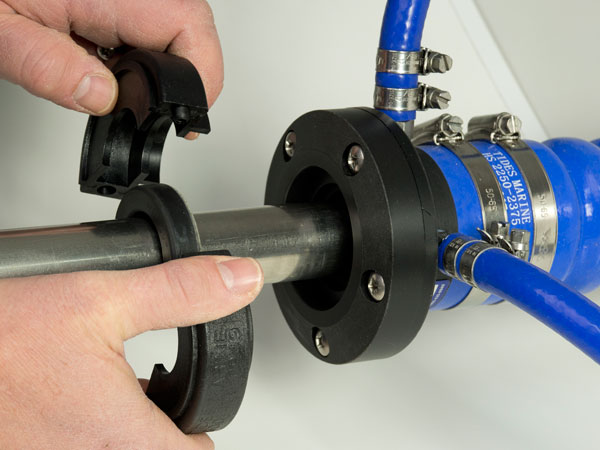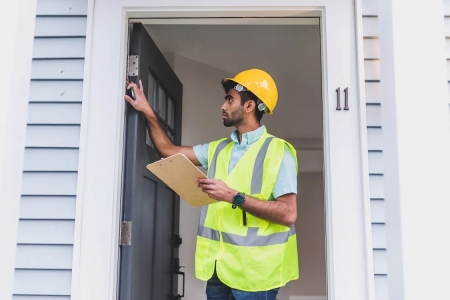
8 Household Items That Can Cause Danger to Your Home Jul 31, 2020

Tips for Making Sure Your Exterior is Storm Proof Jul 11, 2020

When Do You Need a New Garage Door Jul 11, 2020



5 Things You Should Know About Boiler Grants Jun 22, 2020


Benefits of Buying High Quality Portable Generators Apr 13, 2020




How does the steam sterilization process work? Nov 20, 2019

Shaft Seal Installation - What You Need To Know
Feb 17, 2015 00:46
Having given due concern to various aspects of shaft seal installation (this includes the shaft, bore, and seal design), the next step is to install your selected or designed seal. This appears very simple. However, proper installation is rather is difficult task.
As a matter of fact, this is the point where many people go wrong. Improper seal installation is one of the major reasons that lead to shaft seal failure. This guide will help you install the shaft seal properly. It is important to note that good installation practices include use of the right tools and equipment, protection of the assembly after installation, and regular inspection of the seal.

This is because a turned or torn lip fails quickly in service. If the seal design incorporates a garter spring, it is necessary to check that the spring has not been displaced out of the groove due to handling. Your seal ought to be free of damage including cuts, scores, or cuts. Any damage, no matter where its location, or how minimal the damage it, is enough to disqualify the use of the seal and you must get another one.
Continuous lubrication is necessary to maximise service life and minimise wear. If you are installing two shaft seals in tandem, then the space between the seals ought to be packed with grease. Failure to position the seal properly where fluid is being sealed in may result in immediate leakage upon start-up.
Once you have positioned the seal facing in right direction, you should ensure you have it installed at the right angle (perpendicular) to the centrelines of both bore and shaft. Anything less than the required angle means your seal is cocked (angularly misaligned). You should use a counter-bore to align and seat your seal; otherwise the shaft will slip during service.
This force is controlled and monitored to reduce chances of causing damage to the seal. This explains why workshop or factory shaft seal installation tends to be more sucessful because of ability to closely control and monitor the work environment.
Now you know how to go about installing a shaft seal you can now understand the importance of getting it right. Choosing the right seal for the job is obviously imperative too, so make sure you have the right choice for your application, and that it is made by reputable brand to ensure you have the best chance of it lasting for a long while.
As a matter of fact, this is the point where many people go wrong. Improper seal installation is one of the major reasons that lead to shaft seal failure. This guide will help you install the shaft seal properly. It is important to note that good installation practices include use of the right tools and equipment, protection of the assembly after installation, and regular inspection of the seal.

Pre-Installation
This is the most vital part of seal installation. You should inspect the sealing lip adequately to ensure there are no tears or nicks at any point along its circumference. In addition to this, you should ensure there that its lip is not turned back.This is because a turned or torn lip fails quickly in service. If the seal design incorporates a garter spring, it is necessary to check that the spring has not been displaced out of the groove due to handling. Your seal ought to be free of damage including cuts, scores, or cuts. Any damage, no matter where its location, or how minimal the damage it, is enough to disqualify the use of the seal and you must get another one.
Installation
Another important thing to note in shaft seal installation is that a shaft seal is designed to run with proper lubrication. Therefore, you should lubricate the shaft and seal lip. This should be done before installation as this makes it less damaging to the seal. In addition to making installation easier, lubrication helps protect the sealing element during the initial break-in period.Continuous lubrication is necessary to maximise service life and minimise wear. If you are installing two shaft seals in tandem, then the space between the seals ought to be packed with grease. Failure to position the seal properly where fluid is being sealed in may result in immediate leakage upon start-up.
Once you have positioned the seal facing in right direction, you should ensure you have it installed at the right angle (perpendicular) to the centrelines of both bore and shaft. Anything less than the required angle means your seal is cocked (angularly misaligned). You should use a counter-bore to align and seat your seal; otherwise the shaft will slip during service.
Correct and incorrect techniques for shaft seal installation
Good tools are important. However, they will not guarantee proper shaft seal installation without the right amount of force. If your seal is not positioned and forced on correctly, it will be installed improperly. When this process is done in a factory or workshop, the force is usually supplied by pneumatic or hydraulic press. The use of automated presses is important as it eliminates guesswork by providing uniform force to push the seal into the housing.This force is controlled and monitored to reduce chances of causing damage to the seal. This explains why workshop or factory shaft seal installation tends to be more sucessful because of ability to closely control and monitor the work environment.
Now you know how to go about installing a shaft seal you can now understand the importance of getting it right. Choosing the right seal for the job is obviously imperative too, so make sure you have the right choice for your application, and that it is made by reputable brand to ensure you have the best chance of it lasting for a long while.

Home design is about more than picking beautiful finishes — it’s about crafting a home that reflects your lifestyle, tells your story, and functions flawlessly day to day. Whether you're planning a whole-home renovation or looking to upgrade a few key areas, these 10 timeless design features instantly enhance a home’s sophistication, livability, and long-term value. Read more
APPLIANCES
Jun 19, 2025 08:43

When it comes to styling a room, white walls provide the perfect blank canvas. They’re classic, fresh, and can easily adapt to any design aesthetics. If you’re wondering what colour of blinds will look best with those crisp white walls, you’re not alone. Yes, choosing the right blinds can make all the difference, tying the whole room together effortlessly. Read more
APPLIANCES
walls
May 27, 2025 22:53

Source
Purchasing a home is one of the most significant financial decisions a person can make. For many, it represents the culmination of years of savings and planning. Amidst the excitement and stress, one step stands imperatively: the home inspection. While some view it merely as a box that needs to be ticked, the reality is that home inspections play an imperative role in protecting buyers from future costs and heartbreaks. Home inspections, now more than ever, should be prioritized as a non-negotiable part of the buying process. Read more
Purchasing a home is one of the most significant financial decisions a person can make. For many, it represents the culmination of years of savings and planning. Amidst the excitement and stress, one step stands imperatively: the home inspection. While some view it merely as a box that needs to be ticked, the reality is that home inspections play an imperative role in protecting buyers from future costs and heartbreaks. Home inspections, now more than ever, should be prioritized as a non-negotiable part of the buying process. Read more
APPLIANCES
May 21, 2025 16:23
Copyright © Fooyoh.com. All rights reserved. User Agreement | Privacy Policy | Contact us
| Advertising
| About us
| Careers














































